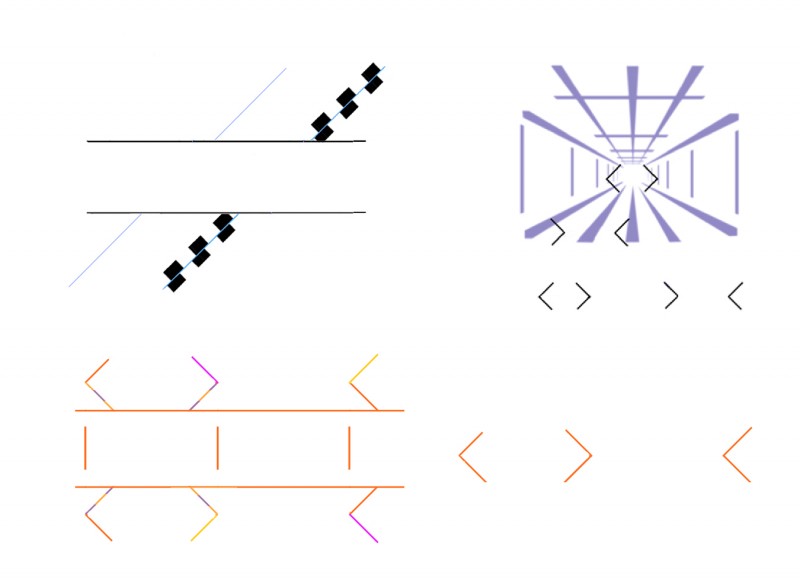I’ve not been posting much because I’ve been struggling with a mammoth revision of my technical site on the Poggendorff illusion. But now that’s done, here’s a post on another Poggendorff puzzle.
In earlier posts I’ve shown examples of competition between illusions, and included a demo of a paradox when the Poggendorff and Muller-Lyer illusions go head to head. Bottom left above I’ve shown that last demo again – not so pretty, but I think a clearer demo. Thanks to the Muller-Lyer illusion the outward pointing arrowheads appear closer together than the inward pointing ones, when objectively the arrow points are identical distances apart (note the reference lines in the middle of the figure). But at the same time, thanks to the Poggendorff illusion, at the left end of the figure the arms of the same arrowheads, objectively aligned, would have had to move further apart, not nearer, in order to produce the effect of misalignment that we see. So the two illusions seem to coexist in total opposition to one another, without a qualm. I’ve repeated the arrowheads to the lower right, to show that, at least as I see it, their appearance is just the same as when embedded in the Poggendorff figure.
But then the top figures show that both these illusions can be inhibited, when set in competition with other illusions. Top left the Poggendorff illusion is normal to the left, but cancelled to the right (or is it even reversed?) when the test arms are illusorily rotated by the addition of some Cafe Wall characteristics. And top right, there’s much less difference (again to my eye) between the illusorily lengthened and shortened elements of the Muller Lyer illusion when we see them in the context of a Ponzo illusion (a scene in apparent depth) than as we see them isolated below the Ponzo scene. In the Ponzo scene, the size-constancy effect is increasing the size of the smaller Muller-Lyer element.
So why are the Poggendorff and Muller-Lyer illusions sometimes inhibited when set in competition with other illusions, when at other times they co-exist with rivals in glorious paradox? Any ideas?

